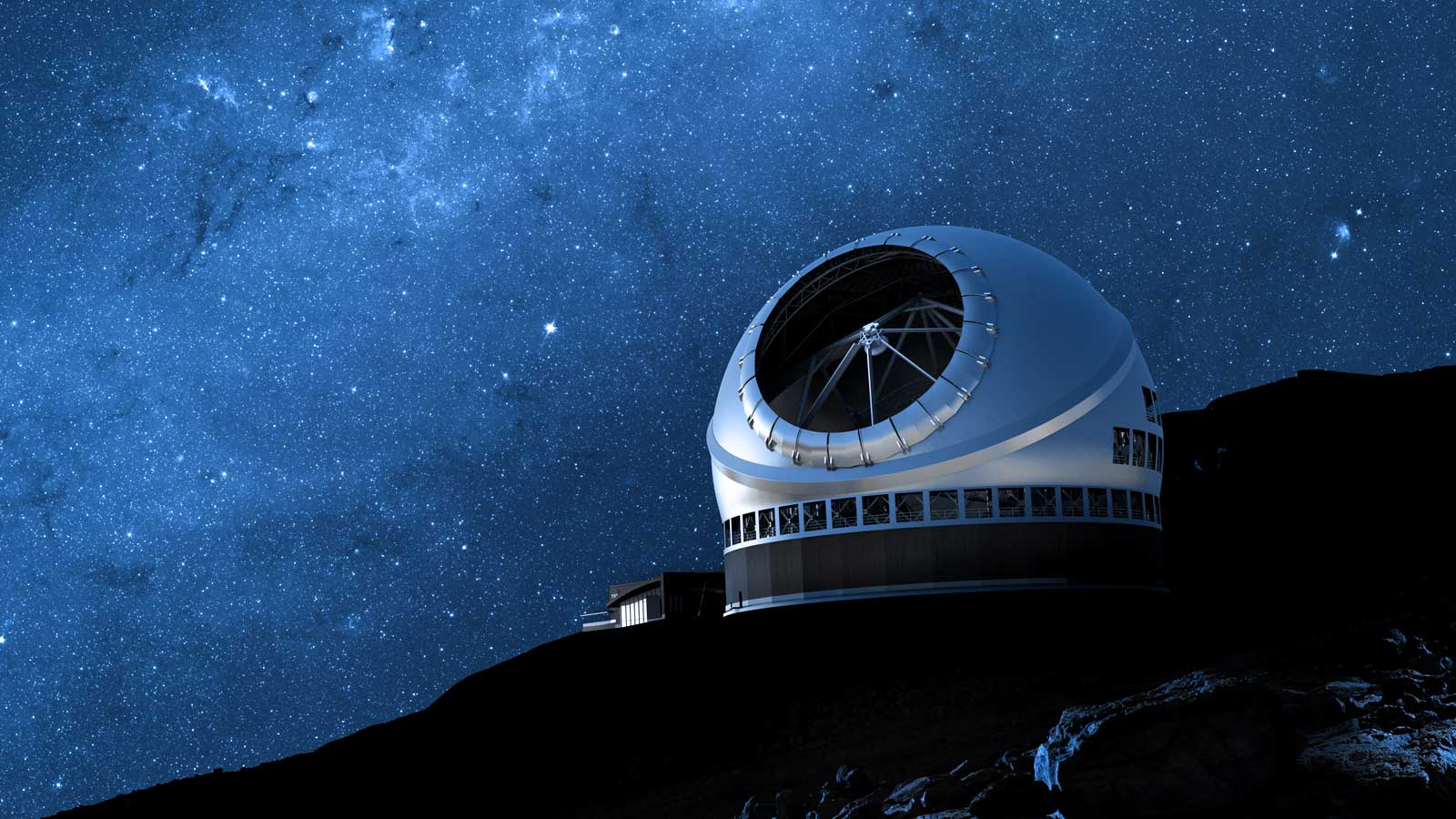
A rendering of the TMT inside its dome, with its 492 individual hexagonal mirrors forming the 30 meter mirror, the largest in the Northern Hemisphere.
TIO has already produced 60% of the blanks for its 574 mirrors which will be used in its extremely large 30 meter primary mirror. There are several steps in forming each hexagonal mirror from the round blank we get from the manufacturer to the final coated, polished hexagon you see in the image above. This page will show you how the mirrors are progressing through each step.
TMT’s 30 meter mirror will be composed from a mosaic of 492 individual hexagonal mirrors, all working together to form a mirror 9 times larger than anything currently employed in a telescope. To these 492 mirrors, we are producing 82 spare mirrors, making the total number of mirrors to be 574. Why do we have 82 spares? The reason is due to the 30 meter mirror's six-fold symmetry. Each of the 82 mirrors (equal to ⅙ of the total 492 mirrors) in a sector has a unique figure, so we have one of each as spares.
As you can imagine, producing 574 precision mirrors to the standards of TMT takes some time, so we are producing them now. Forming one of these 574 mirror segments takes several steps. First of all, they are cast as round pieces of glass we call blanks. These are all produced in Japan. These blanks then get distributed to three teams (55% go to the U.S., 30% go to Japan, and 15% go to India) where they are polished into what we call roundels, cut into hexagonal segments, and integrated in their support structure, the polished mirror assembly, which we abbreviate as the PMAs. Dividing this work up among these three teams not only is more efficient, but it is a risk mitigator as well: if one team has a delay, the other two can take on more.
The final figuring of all the mirrors (the ion beam figuring) will happen at a single place to ensure every one meets the rigorous standards for the mirror. When this is done, the finely polished hexagon assemblies are shipped to TIO where they will be coated to be reflective mirrors and get integrated into the primary mirror system of the telescope.
With 574 mirrors used in the system, there’s a lot of tracking how far the mirrors have come and where they are in the process. The table below shows the current status of the mirrors. We see that 334 blanks have been produced (that’s working from the bottom of the table: 160 + 109 + 65). This means almost 60% of the blank mirrors have already been produced now. We’re more than half the way there with the mirror blanks! We see that 160 finished roundels have been produced, representing 28% of those needed! All these activities are going on all the time, so we update this table twice a year.
You can watch the video below which shows each segment of the mirror, whether in the primary mirror, or the spare sector, color coded to match where it is. Here you can see the outer ring of blanks not yet made, and the inner ring of blanks changing from in-work blanks to accepted blanks to in-work roundels to accepted roundels. The numbers in the table are also updated with each image, resulting in the figure you see above.